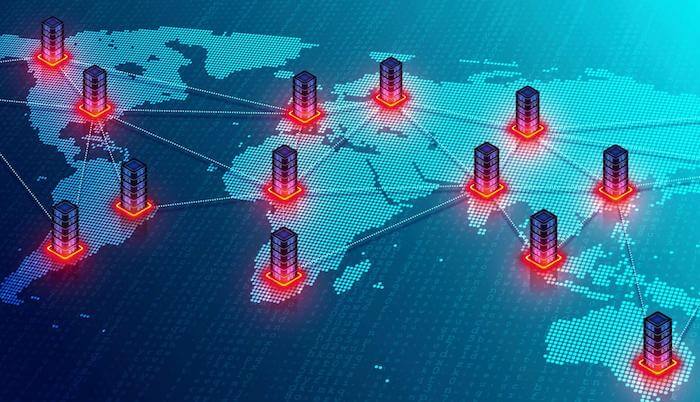
Distributed systems have become increasingly popular. A distributed computing system is the foundation for almost all web apps. Consequently, distributed computing abilities will be necessary for all computing jobs in the future, whether they involve database management or video game development. However, debugging distributed systems is a complex task.
In this blog post, we will explore the challenges of debugging distributed systems and provide tips and best practices to help you overcome these challenges.
What is a Distributed System?
A distributed system is a type of computer system in which multiple computers, often located in different physical locations, work together as a single cohesive unit to solve a computational problem or provide a service.
These computers communicate and coordinate with each other through a network, using a set of protocols and algorithms to achieve their common goals.
Distributed systems are designed to be scalable, fault-tolerant, and resilient to failures, making them suitable for large-scale applications that require high performance, reliability, and availability.
Examples of distributed systems include cloud computing platforms, distributed databases, content delivery networks, and blockchain networks.
Related: An Introduction to Distributed Computing: The Basics and Benefits
Challenges of Debugging Distributed Systems
Distributed systems have unique challenges when it comes to debugging. Some of these challenges include:
Increased Complexity
Debugging a single system is relatively easy compared to debugging a distributed system. These systems involve multiple components that are interconnected, and a failure in one component can affect the entire system. As a result, the complexity of distributed systems increases the difficulty of debugging.
Heterogeneity
Distributed systems often include different types of components, such as servers, workstations, and mobile devices. Each of these components can have different hardware, software, and operating systems, making it challenging to debug the system.
Dynamic Nature
Distributed systems are constantly changing. New components can be added, old components can be removed, and the system can change its configuration based on demand. This dynamic nature can make it challenging to debug distributed systems because the system’s behaviour can change over time.
Network Latency
Distributed systems rely on a network to communicate between components. The network latency can vary depending on the distance between components, the number of components, and the network’s configuration. Network latency can make it challenging to debug distributed systems because it can cause delays and impact the performance of the system.
Scalability
Distributed systems are designed to be scalable, meaning that they can handle an increasing workload. However, this scalability can make it challenging to debug the system because it can be difficult to replicate the system’s behaviour in a test environment.
Limited Observability
Debugging distributed systems requires visibility into the system’s behaviour. However, distributed systems can have limited observability, making it challenging to diagnose and fix issues.
Tips for Debugging Distributed Systems
Embrace Failure
One of the best ways to debug distributed systems is to embrace failure. Failure is inevitable in distributed systems, and by simulating failures, you can identify weaknesses in the system and address them before they cause significant issues. There are two primary ways to embrace failure:
A. Use Fault Injection
Fault injection is the process of intentionally introducing failures into a system to test its behaviour. Fault injection can help you identify the system’s weak points and make improvements to prevent future failures. By introducing failures in a controlled environment, you can ensure that the system is resilient and can handle various types of failures.
B. Implement Chaos Engineering
Chaos engineering is the process of intentionally causing failures in a distributed system to test its ability to handle failures. Chaos engineering involves creating controlled experiments that simulate real-world scenarios, such as server failures or network latency issues. The goal of chaos engineering is to identify potential issues before they cause significant problems in the system.
Design for Observability
Observability is the ability to measure and understand the system’s behaviour. Designing for observability is critical in debugging distributed systems. There are several ways to design for observability:
A. Use Instrumentation
Instrumentation involves adding code to the system to collect data about its behaviour. Instrumentation can help you track the system’s performance, identify bottlenecks, and monitor its behaviour.
B. Implement Log Aggregation
Log aggregation involves collecting log data from multiple components in the system and storing it in a centralized location. This can help you identify issues in the system by allowing you to search and analyze log data from multiple components.
C. Use Tracing
Tracing involves adding metadata to requests and messages as they move through the system. This metadata can help you understand the path a request took through the system and identify potential issues. This can help you identify bottlenecks in the system by allowing you to see the time it takes for a request to move through the system.
Analyze Metrics and Logs
Analyzing metrics and logs is critical in debugging distributed systems. Metrics can help you understand the system’s behaviour, while logs can help you identify issues in the system. Here are some tips for analyzing metrics and logs:
A. Track Key Performance Indicators (KPIs)
KPIs are metrics that are critical to the system’s performance. Tracking KPIs can help you identify issues in the system and determine if the system is performing as expected. Some common KPIs for distributed systems include response time, latency, and throughput.
B. Use Log Analysis Tools
Put Your Tech Company on the Map!
Get featured on Nicholas Idoko’s Blog for just $50. Showcase your business, boost credibility, and reach a growing audience eager for tech solutions.
Publish NowLog analysis tools can help you search and analyze log data from multiple components in the system. These tools can help you identify issues in the system by allowing you to search for specific patterns or errors in the log data.
Use Distributed Tracing
Distributed tracing involves adding metadata to requests and messages as they move through the system. This metadata can help you understand the path a request took through the system and identify potential issues. There are two primary ways to use distributed tracing:
A. Implement Trace Context Propagation
Trace context propagation involves adding metadata to requests and messages as they move through the system. This metadata includes a unique identifier that is used to track the request as it moves through the system. By propagating trace context, you can understand the path a request took through the system and identify potential issues.
B. Use Distributed Tracing Tools
Distributed tracing tools can help you visualize the path a request took through the system and identify potential issues. These tools can also help you identify bottlenecks in the system by allowing you to see the time it takes for a request to move through the system.
Continuously Test and Monitor
Testing and monitoring are critical in debugging distributed systems. Here are some tips for continuously testing and monitoring the system:
A. Use Continuous Integration/Continuous Deployment (CI/CD)
CI/CD involves automating the process of building, testing, and deploying the system. By automating these processes, you can ensure that the system is tested and deployed consistently, which can help you identify issues before they cause significant problems.
B. Implement Automated Testing
Automated testing involves creating automated tests that simulate real-world scenarios. These tests can help you identify potential issues in the system and ensure that the system is functioning correctly.
C. Use Real-Time Monitoring
Real-time monitoring involves monitoring the system in real-time to identify issues as they occur. Real-time monitoring can help you identify issues in the system before they cause significant problems.
Related: The Challenges and Opportunities of Real-time Data Processing
Conclusion
Debugging distributed systems can be challenging due to their complex nature. However, by following these tips and best practices, you can make the process easier and more effective. You will be able to identify issues before they cause significant problems. By taking a proactive approach to debugging, you can ensure that your distributed system is resilient and can handle failures.
Before you go…
Hey, thank you for reading this blog to the end. I hope it was helpful. Let me tell you a little bit about Nicholas Idoko Technologies. We help businesses and companies build an online presence by developing web, mobile, desktop, and blockchain applications.
We also help aspiring software developers and programmers learn the skills they need to have a successful career. Take your first step to becoming a programming boss by joining our Learn To Code academy today!
Be sure to contact us if you need more information or have any questions! We are readily available.
[E-Books for Sale]
1,500 AI Applications for Next-Level Growth: Unleash the Potential for Wealth and Innovation
$5.38 • 1,500 AI Applications • 228 pages
Are you ready to tap into the power of Artificial Intelligence without the tech jargon and endless guesswork? This definitive e-book unlocks 1,500 real-world AI strategies that can help you.
See All 1,500 AI Applications of this E-Book
750 Lucrative Business Ideas: Your Ultimate Guide to Thriving in the U.S. Market
$49 • 750 Business Ideas • 109 pages
Unlock 750 profitable business ideas to transform your future. Discover the ultimate guide for aspiring entrepreneurs today!
See All 750 Business Ideas of this E-Book
500 Cutting-Edge Tech Startup Ideas for 2024 & 2025: Innovate, Create, Dominate
$19.99 • 500 Tech Startup Ideas • 62 pages
You will get inspired with 500 innovative tech startup ideas for 2024 and 2025, complete with concise descriptions to help you kickstart your entrepreneurial journey in AI, Blockchain, IoT, Fintech, and AR/VR.
We Design & Develop Websites, Android & iOS Apps
Looking to transform your digital presence? We specialize in creating stunning websites and powerful mobile apps for Android and iOS. Let us bring your vision to life with innovative, tailored solutions!
Get Started Today



